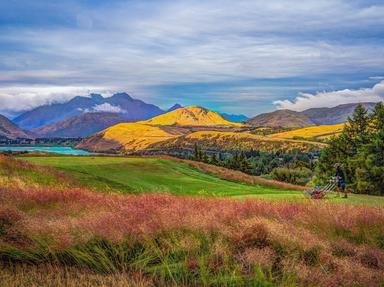Quiz Answer Key and Fun Facts
1. Wellington is the capital of New Zealand, but it was not the first seat of government in the country. What were its predecessors?
2. Wellington was founded in 1839/40. After a false start at Petone, the city was laid out around Lambton Harbour. With considerable foresight, the planners set aside land for which of the following?
3. What magnitude on the Richter scale was the earthquake which struck the lower North Island on 23 January 1855, permanently altering the landscape of the Wellington region?
4. Who was Baron von Alzdorf? He's associated with the 1855 earthquake.
5. What is the principal claim to fame of Wellington's Old Government Buildings?
6. A ferry connects Wellington with the town of Picton. Name the body of water which separates the two.
7. What happened to the inter-island ferry Wahine on 10 April 1968?
8. Which of the following is accepted by the New Zealand Post Office as an alternative name for Wellington?
9. After which 19th century figure was Wellington's oldest university named?
10. Matiu or Somes Island in Wellington Harbour is a scientific and historic reserve owned by Maori and managed by the Department of Conservation. What was it used as during the First World War?
Source: Author
Macjaq
This quiz was reviewed by FunTrivia editor
Pagiedamon before going online.
Any errors found in FunTrivia content are routinely corrected through our feedback system.


